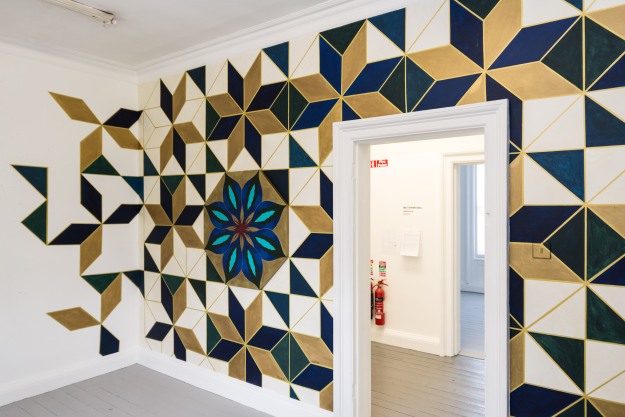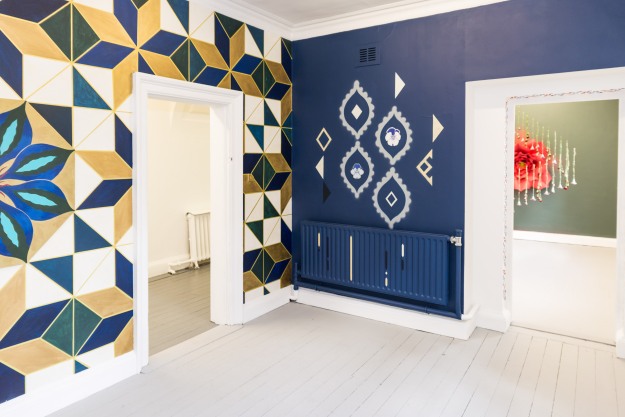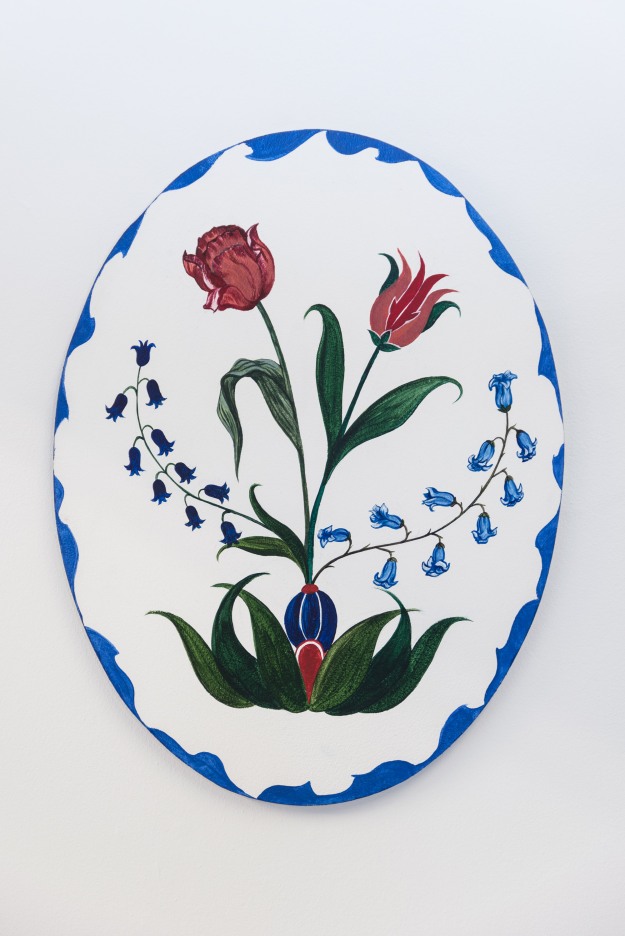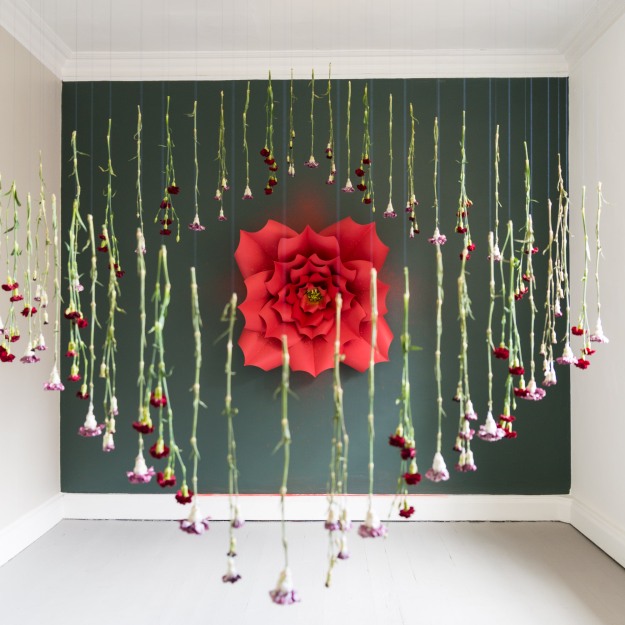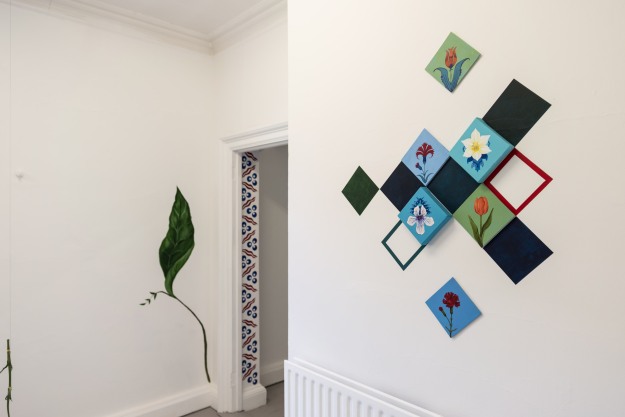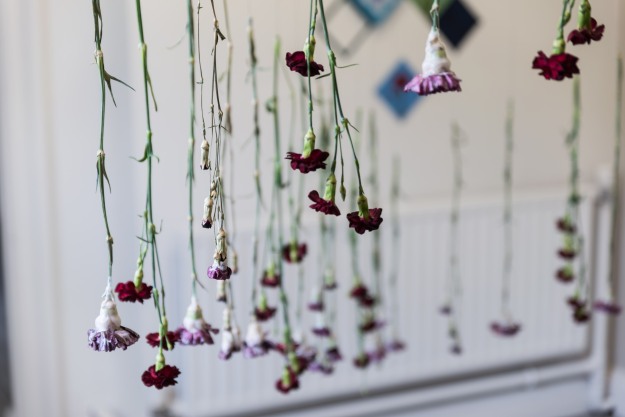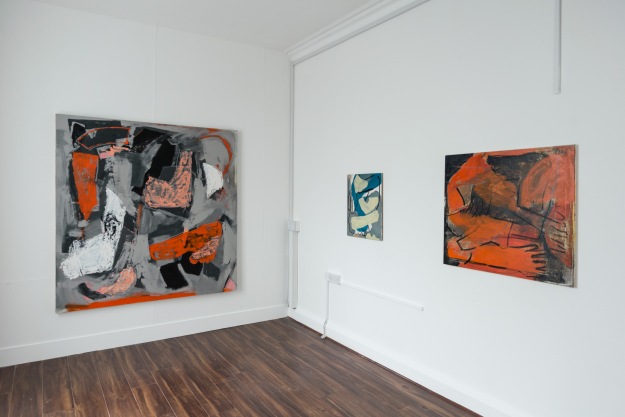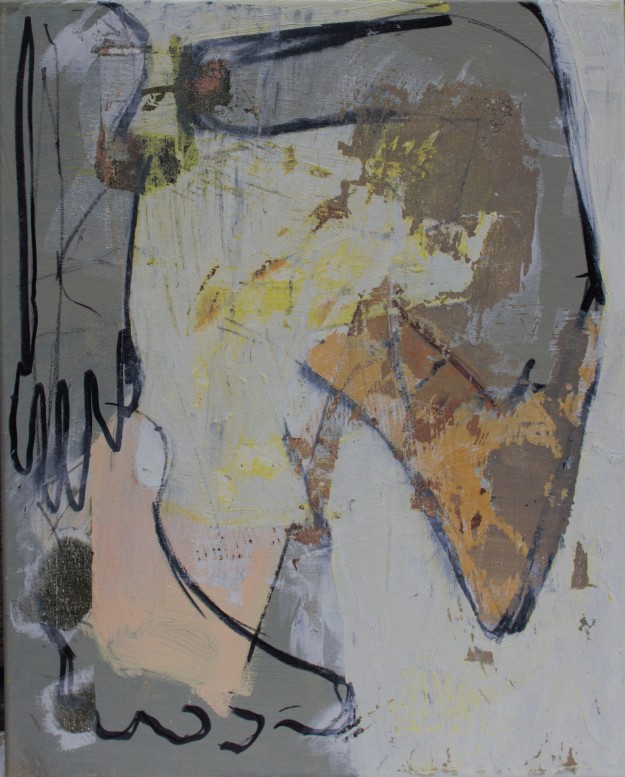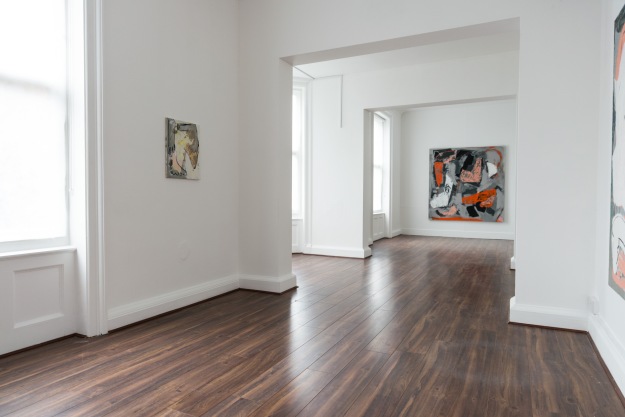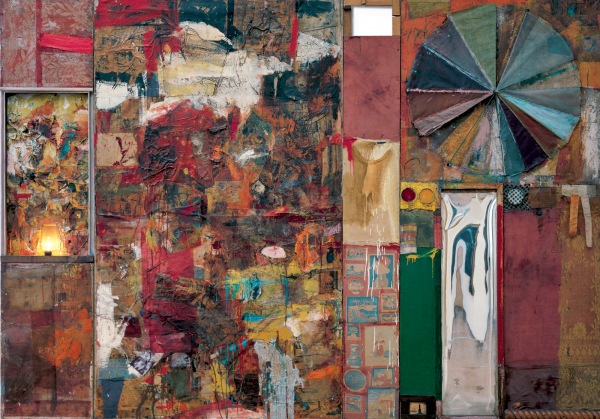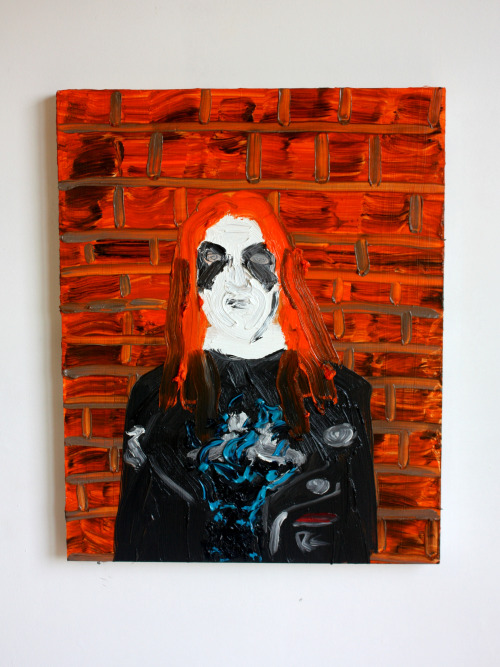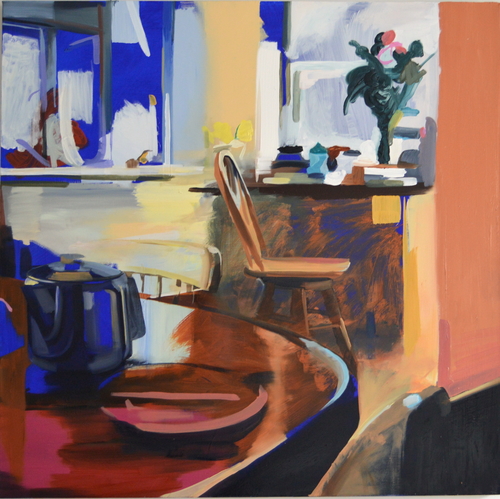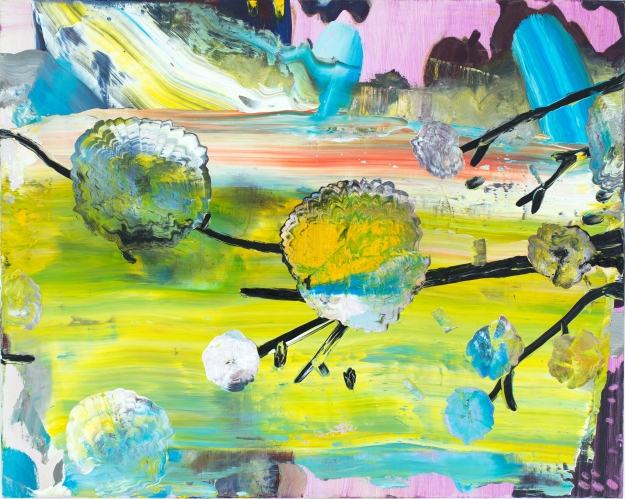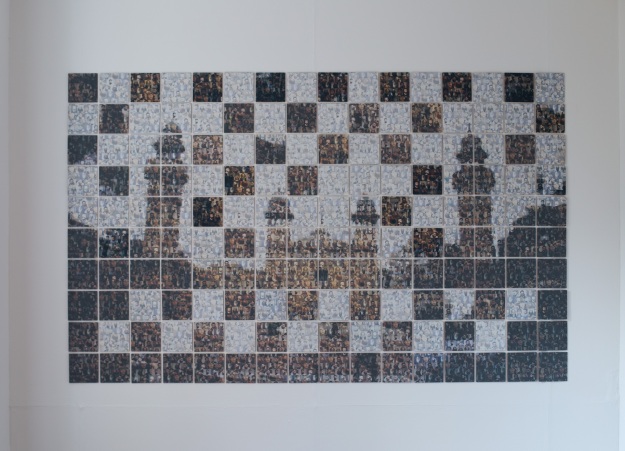Article by Michael Hill:
Stranger Shores is an exhibition taking place at the Fenderesky Gallery, Belfast, from May 21 to June 26, 2015. Curated by Peter Burns, it includes a total of thirty-nine paintings by John Albert Duigenan, Aileen Murphy, Sheila Rennick, and Burns himself. The many paintings, in a range of sizes and variety of media, depict myriad peculiar people, plants, visions, and environments in an extraordinary and vivid manner. Even the more commonplace characters seem to find themselves in compromising or stimulating scenarios. Despite the encyclopaedic diversity of the works in this exhibition, the four artists share a great sensitivity towards their subject matter and a most direct approach to confronting it. Some further observations are offered below:

Ancient Times, Oil on Canvas, Peter Burns
“The colossal eye of a prehistoric lizard takes in a barren volcanic landscape during Ancient Times. His tongue flicks through the sulfuric air to the edge of the canvas. A tiny and unlikely hero reaches to pierce the beast’s throat with his lance – or perhaps it is a reluctant painter reaching with a giant brush to complete his menacing creation. In the background of the scene, lava and semen erupt violently towards a suspended vulva in an urgent race to propagate life in this primordial dawn.

Flower, Acrylic on Canvas, John Albert Duigenan
A curtain of canvas is drawn back and hooked over the top of the stretcher, revealing a tottering monstrosity lurching forth from a cloud of talcum powder like Joseph Merrick uncovered to the world at a penny gaff show on the Whitechapel Road. Paint dribbles towards the base of the picture like sticky boiled sweets spat out by the Toddler.

Rose, oil on board, Aileen Murphy
A series of pensive felines peer across the gallery; their ears pricked forward inquisitivly at their chaotic neighbours. Shhhhhhhh. Their tightly curled bodies are wound up and ready to pounce or scram in an instant. The cats’ senses are attuned to the chemical substances permeating the air; pheromones surrounding them and painted in electric colours. Their hackles rise as they become acutely aware of every change in scent, heat or movement.
Rose and Mary’s Cat will remain perturbed by the sex and surrealism around them but tricolor Tom Cat reclines, head and tail out of the frame, as his pink penis protrudes from his body. Have you heard the way the cats yowl at night in the car park across the road from the gallery?
Some fruits and flowers also have barbed tips and prickly skin to ward away prying hands and insects but others welcome curious fingers and proboscises.
Megabats are frugivorous and nectarivorous. They either have sharp teeth to pierce hard fruit skins or long tongues that are inserted deep into a flower, collecting pollen on the way, which is then transferred to the next blossom. Cross-pollination allows the flora to reproduce, and hybrid strains of a species to emerge.
Some plants expel toxic fumes into the air or sweet perfumed flurries; others purify their atmosphere. The NASA Clean Air Study demonstrates that certain common household plants naturally remove toxins such as benzene, formaldehyde and trichloroethylene from the air helping to counteract the effects of sick building syndrome.
A Teacher checks his txts before class starts. New Message. 3Message. To restore 3 data services, please access your device settings. <Messages. Edit. Delete. He glances up and catches his own gaze in the staffroom mirror. Camera. Click. He stares blankly at his own self-portrait on the tiny greasy screen. He doesn’t notice the jizzing cocks and bulbous tits graffitied on the wall behind him. The biology students have done their homework.

Schoolboys in Wolves Clothes, Oil on Canvas, Sheila Rennick
In the classroom a protractor spins across one of the desks as a boy lurches back in his seat. Some of his fellow classmates look on or away in dismay. A pack of lads with wolf carcasses draped over their heads point their fingers at the startled teen. His face has morphed into that of a soured Guanajuato mummy. They pull their triggers. A simple sketch of a sunrise or utopian domed sanctuary drifts to the floor.
At the top of a candy-coloured precipice, a lone figure surveys a barren but beautiful landscape. Reminiscent of the Huangshan UNESCO World Heritage Site following a cataclysmic disaster, the nuclear scorched peaks with sparse unnatural foliage reach to the heavens. The Wanderer above the Sea of Fog is revealed to be American television and social media personality, Kim Kardashian. She clutches the shrunken head of her husband, rapper and entrepreneur, Kanye West. It is hard to imagine why she has undertaken this perilous journey and how she will survive in this newly emerging world.
Yesterday’s seductress Salome sits above her table like a disinterested Sheela na gig. A silver platter rests before her but rather than the head of a decapitated prophet, the small kitten on the scarlet table cloth next to her sniffs a rock-pool of baptised shellfish.
A fried egg plummets through the blackness of space towards a copulating couple within the screen of a tiny television. The aerial is tuned to the correct frequency and it takes a second to realise that it is the bed shuddering and not the transmitted image. But it’s not going to happen tonight. An egg needs to be fertilised and incubated before a world can be created, before life can emerge, before an eye can open.”
Michael Hill, June 2015
Posted by Kristina Huxley

